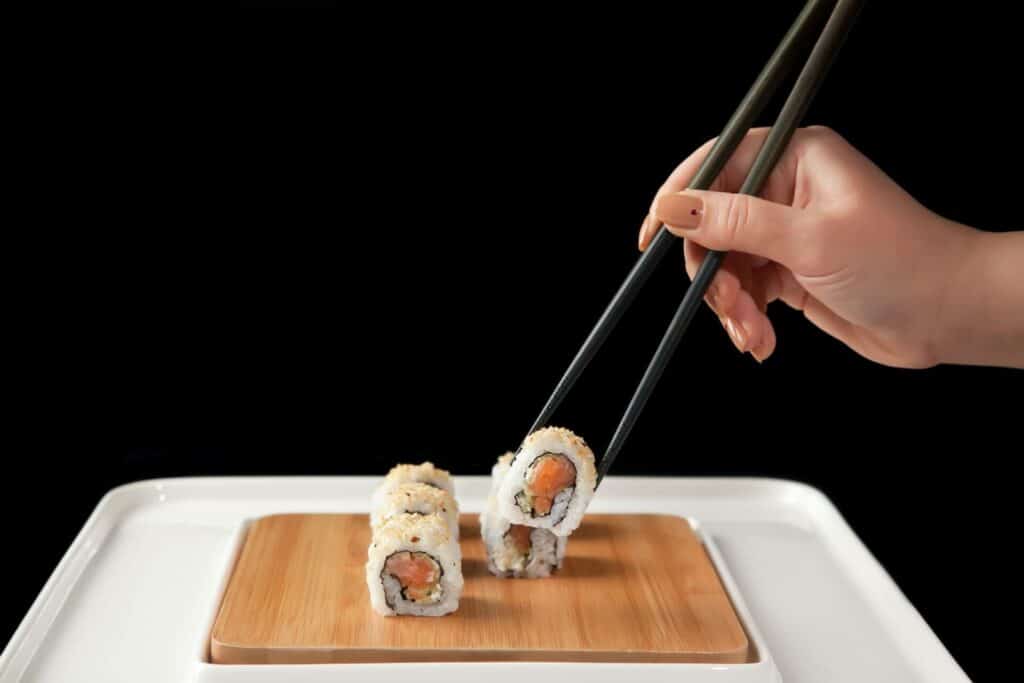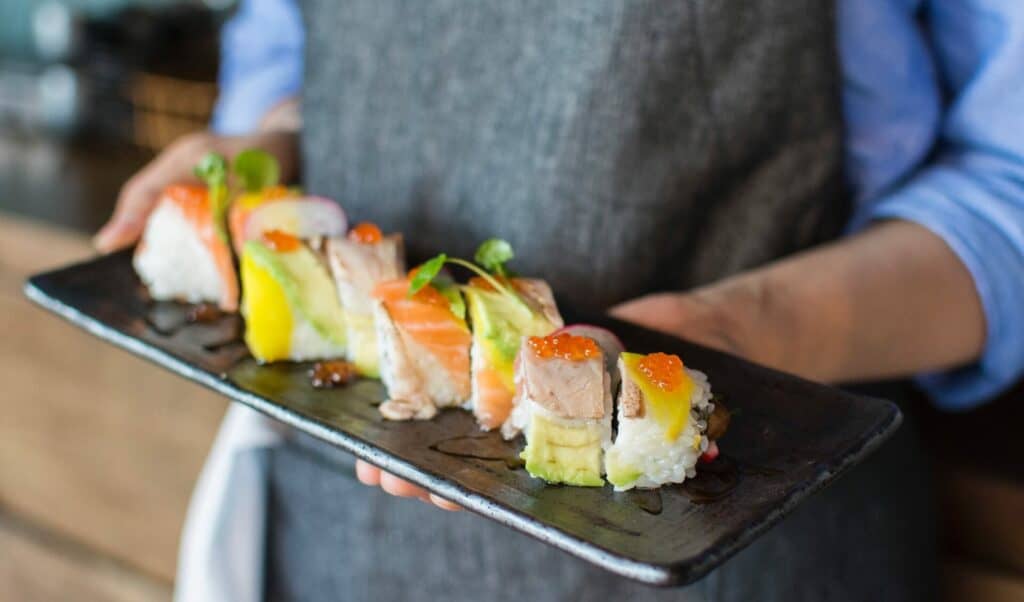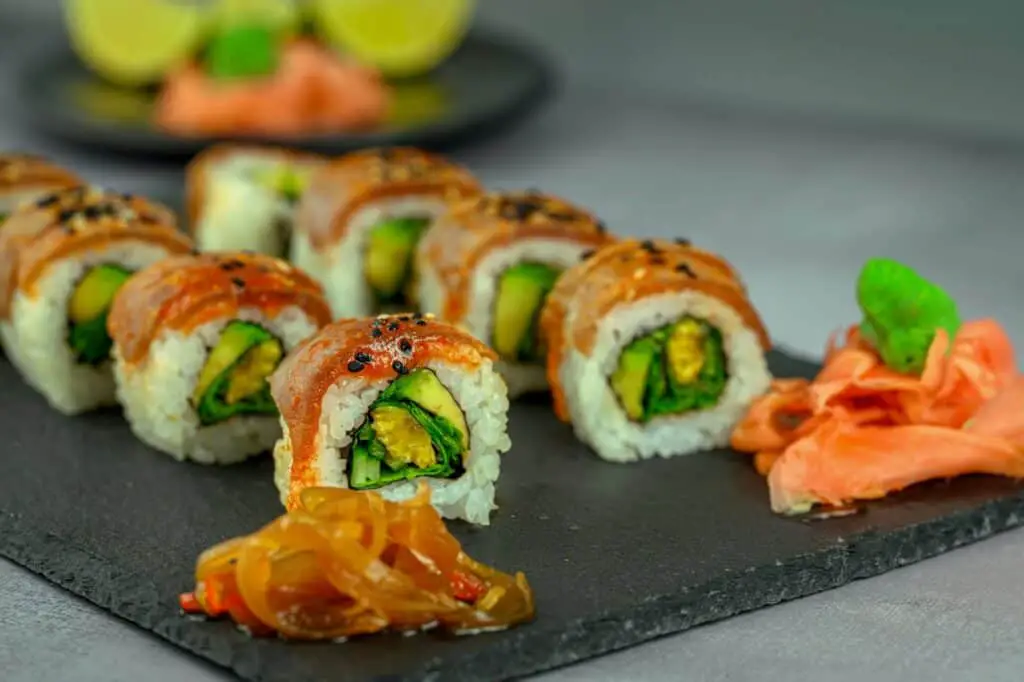The classic maki rolls used to be the essence of sushi, but since the invention of California rolls, it’s hard to imagine a sushi meal without them. If you wonder is a California roll sushi or not, read more about its origins and invention, and learn how to make them at home.
So is a California roll sushi? A California roll is a type of sushi that was invented in Los Angeles in the 1960s. It is usually made with crabmeat, avocado, and cucumber, and does not typically include raw fish. For this reason, some people do not consider it to be true sushi.
However, it remains a popular dish among sushi lovers and is often enjoyed as an appetizer or main course.


Fans of California rolls can finally learn more about this interesting delicacy and try an easy recipe to make their favorite sushi type at home.
Sashimi, on the other hand, is a classic sushi dish that typically consists of raw fish or seafood. If you are looking to try a true sushi experience, be sure to order sashimi as part of your meal.
Is a California Roll a Sushi Kind, and What Is It Exactly?
Yes, a California roll is sushi. It’s rolled with a bamboo mat to resemble maki rolls, except the seaweed is placed inside; they look reversed compared to the classic recipe.
A typical Cali roll includes imitation crab, cucumber, and avocado, but any restaurant you go to will have a more diverse selection of these rolls on their menu.
When the roll was first created, California didn’t have suitable fresh fish, so avocados were added as a substitute for tuna and crab sticks as a substitute for salmon or any other fish meat.
California Rolls Aren’t the Only Sushi You Can Have – There Are Different Kinds
Sushi is essentially a group of delicacies prepared similarly or with similar ingredients. For example, maki rolls were the first-ever sushi created in Japan. They have seaweed on the outside, and inside there’s cucumber and typically tuna or salmon.
When you visit a Japanese restaurant’s menu, you’ll see many sushi varieties. Besides maki and Cali rolls, you can get:
- Nigiri – a lump of rice covered with a piece of fish, vegetable, or egg,
- Chirashi – a type of deconstructed, or scattered, sushi with rice, fish, and vegetables served in a bowl,
- Sashimi – slices of raw, seasoned meat such as tuna and salmon,
- Uramaki – an inside-out roll inspired by California rolls,
- Gunkan – similar to nigiri, but the entire piece is wrapped in nori seaweed and sometimes topped with salmon or flying fish roe (ikura or tobiko)
- Rainbow rolls – rolls wrapped in an avocado slice,
- Alaskan rolls – similar to the Rainbow rolls but wrapped in salmon slices.
American and Japanese chefs in the US worked relentlessly on creating varieties of Westernized sushi rolls. The creations that came after California rolls were incredible.
Each newly created one represented American flavors and textures, mostly corresponding to a state or region (such as Alaska, Hawaii, and Boston).

Are California Rolls Really from California? The Origins and Beginnings of This Delicacy
The first sushi restaurant in Los Angeles was opened in 1966 in Little Tokyo. At the time, they had an export manager for Japan and the US called Noritoshi Kanai. He employed a Japanese traditional sushi chef to cater to the local Japanese population.
Since California didn’t have many fresh, great quality fish options, Kanai imported it from Japan via airplane. Considering airfare wasn’t as developed back then as it is today, this was a fantastic feat by Kanai.
However, this method of getting fish eventually became too expensive and hard to keep up with, so restaurants created alternatives.
One story suggests a chef named Ichiro Mashita started using avocado as a substitute for tuna because of its fattiness and texture. Another claims a famed chef Hidekazu Tojo invented the California roll for the people of Los Angeles because they preferred eating sushi that didn’t have seaweed on the outside.
This Delicacy Was Adapted to Suit the Western Palate and Ingredient Availability
The main reason California rolls have gluten-free rice on the outside is that the Western customers apparently didn’t like the looks of nori seaweed. When the inside-out roll was created, more Americans started buying and eating sushi, thus beginning a massive Japanese food trend in the US.
The ingredients put in Cali rolls are all pretty much local. Avocados are grown in California, and they’re fatty and juicy vegetables, which makes them an almost ideal substitute for tuna.

With This Simple Recipe, You Can Make Cali Rolls at Home and Impress Anyone
The most complicated thing about making sushi at home is rolling it. Professional chefs use bamboo mats to protect the rolls’ structure, but if you don’t have one, regular plastic wrap will do.
For 4 servings of classic Cali roll, you’ll need:
- 2 cups sushi rice,
- 2 cups water,
- 1/4 cup rice vinegar,
- 4 half sheets nori seaweed,
- 1 teaspoon sesame seeds,
- 8 imitation crab sticks,
- 1 cucumber, sliced into thin strips,
- 1 avocado, thinly sliced.
Cook the rice in water for about 15 minutes. When you transfer it to a bowl after cooking, add the rice vinegar and stir.
Place one half of nori on a bamboo mat or some plastic wrap, then cover the sheet with rice and sprinkle with sesame seeds. Press the rice with your hands, so it sticks to the sheet, and then flip it over altogether.
Place the rest of the ingredients onto the nori sheet, then roll. Start from the side closest to you, and carefully roll up until you reach the top of the sheet.
Cut into smaller pieces and serve.
Keep it in the fridge if you want to eat it the next day.
From Tokyo to California, Sushi Took Over By Storm
One of the sushi world’s best inventions was the California roll. It’s not only delicious and easy on the stomach, but it’s a simple recipe that carries so much complexity in a small bite.
Having the rice on the outside seems more complicated to make, but biting into it and then reaching the umami flavors on the inside seems like a great way to enjoy a meal. The next time you decide to go out for dinner, ask for some Cali rolls and treat yourself to one of the best dishes ever.